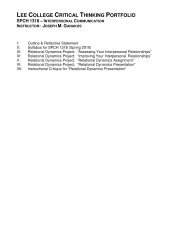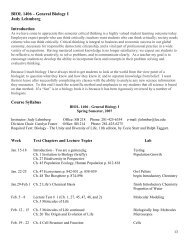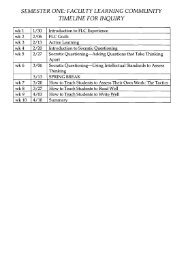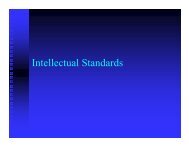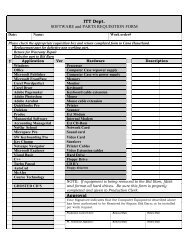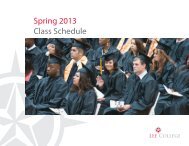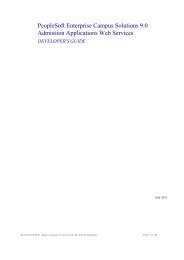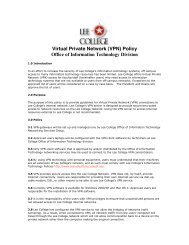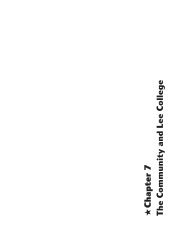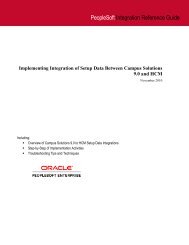Candidate's Statement on Teaching - Lee College
Candidate's Statement on Teaching - Lee College
Candidate's Statement on Teaching - Lee College
Create successful ePaper yourself
Turn your PDF publications into a flip-book with our unique Google optimized e-Paper software.
pages l<strong>on</strong>g, in the above format. This does not include the cover page or the works cited page.<br />
3. At least five reputable sources must be cited in your paper; be cautious of older papers, they may not<br />
c<strong>on</strong>tain c<strong>on</strong>temporary informati<strong>on</strong> about your subject.<br />
Try these:<br />
http://journals.asm.org/minireviews.shtml {this site is a searchable index of minireviews, great place to<br />
start!}<br />
Microbiology and Molecular Biology Reviews {another site with good review articles}<br />
Applied and Envir<strong>on</strong>mental Microbiology<br />
Journal of Microbiology<br />
Journal of Clinical Microbiology<br />
Microbiology<br />
This is just a sample; there are a t<strong>on</strong> of microbiology journals out there, so no excuses!<br />
YOU CANNOT USE WEB SITES AS SOURCES. Your textbook does not count either.<br />
4. Paper structure:<br />
a. Cover page: Includes informative title, your name, date, and the class (Biology 2421<br />
Microbiology). ALSO have an abstract, which is a short summary of the paper. The abstract follows the<br />
outline of the whole paper (beginning to end), but does not go into detail. It should be interesting (“grabs<br />
the reader’s attenti<strong>on</strong>”), includes the main topic (the pathogen and disease) and previews the structure of<br />
the paper (what you plan to discuss in the paper). REMEMBER: This does not count in the page total.<br />
b. Paper Body (should be fully cited!)<br />
i. Introductory secti<strong>on</strong>- Can include:<br />
• Scientific name (Genus and species) and comm<strong>on</strong> name of the pathogen<br />
• Name of the disease or diseases it causes<br />
• Brief history, interesting informati<strong>on</strong> about the pathogen or disease<br />
ii. Descriptive secti<strong>on</strong>s- describes the disease including:<br />
• Anatomical and physiological descripti<strong>on</strong> of the pathogen<br />
• Chain of infecti<strong>on</strong> (mode of transmissi<strong>on</strong>)<br />
• Frequency and distributi<strong>on</strong> of the pathogen/disease in the U.S. and in the world<br />
• Within a populati<strong>on</strong>, describe any trends <strong>on</strong> who gets the disease (by race, age, etc)<br />
• How does the pathogen cause the disease?<br />
• What parts of the body are affected by the disease?<br />
• Symptoms of the disease<br />
• Treatment of the disease and vaccinati<strong>on</strong> (if applicable)<br />
• Preventi<strong>on</strong><br />
iii. C<strong>on</strong>clusi<strong>on</strong> paragraph- Restates the main topic (pathogen and disease) & summarizes<br />
main points<br />
c. Works cited page- includes all books, magazines, etc that were cited in your paper.<br />
5. You must cite all factual informati<strong>on</strong> in your paper. It is better to assume that you must cite something<br />
than to not give credit to the source. Citati<strong>on</strong>s are designed to give credit to the author whose informati<strong>on</strong><br />
you are using.<br />
Direct quotes of sentences or paragraphs are NOT allowed in this paper. Reword everything<br />
into your own words. Any excepti<strong>on</strong>s must be approved before you turn in the paper by the



